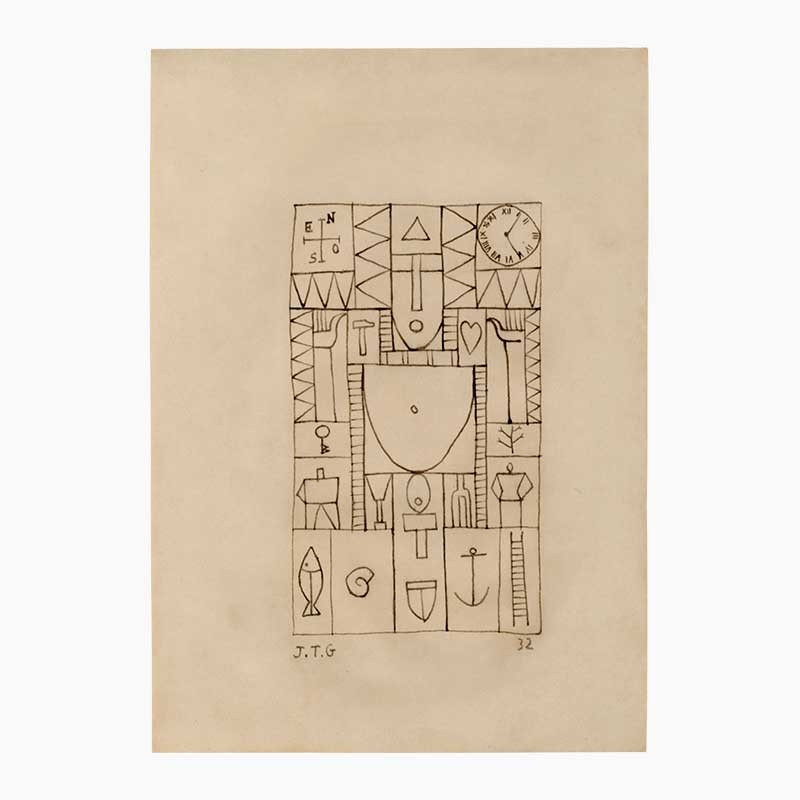
Joaquín Torres-García
Untitled, 1932. Ink on paper, 28 x 20 cm
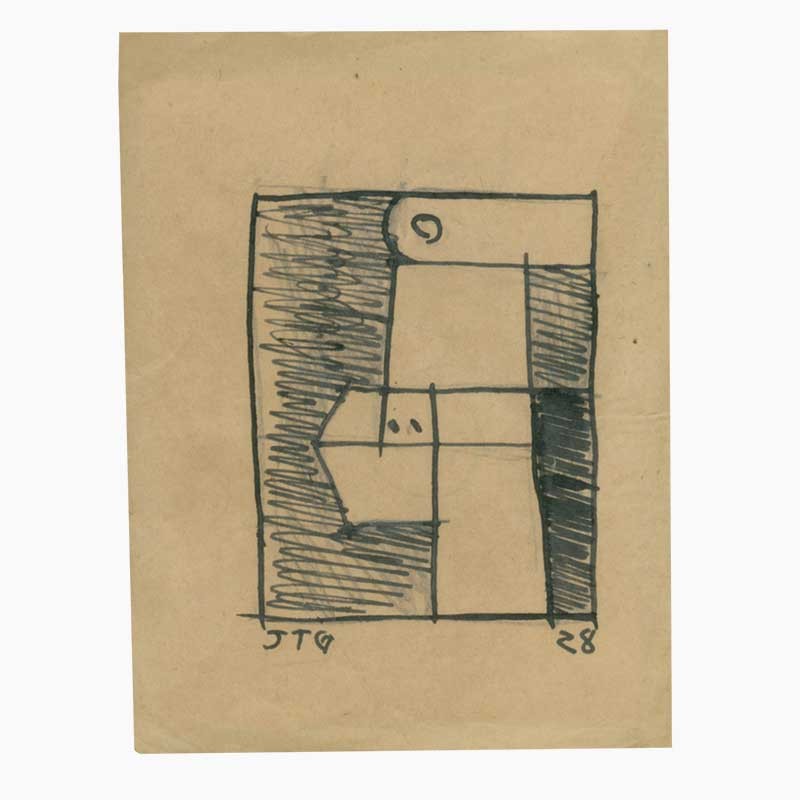
Joaquín Torres-García
Formas, 1928. Ink on paper, 12.5 x 9.6 cm

Letter from Joaquín Torres-García to Rafael Barradas, 20 April 1920
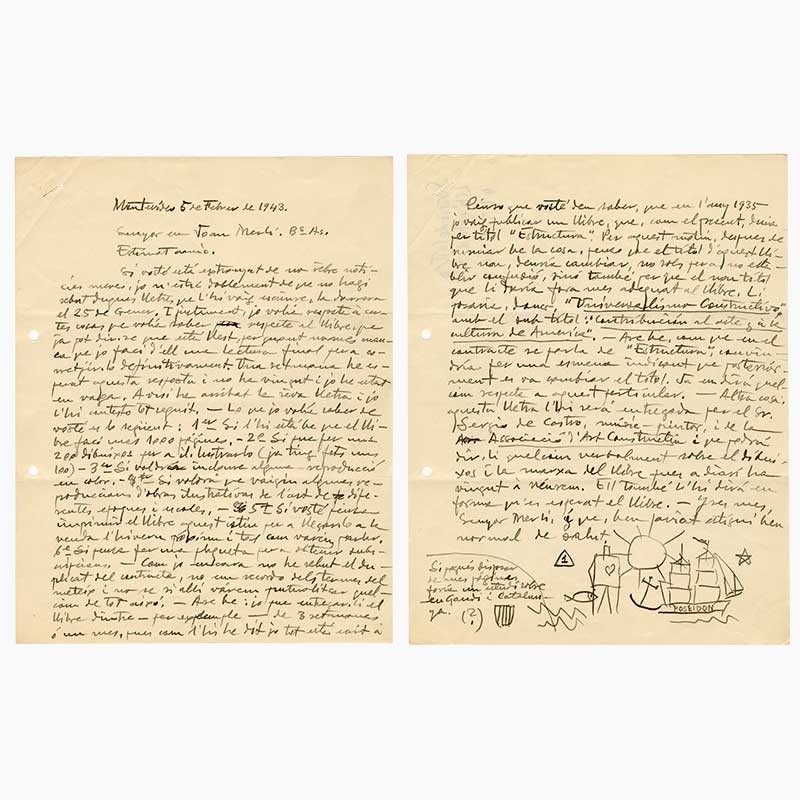
Letter from Joaquín Torres-García to Joan Merlí, 5 February 1943
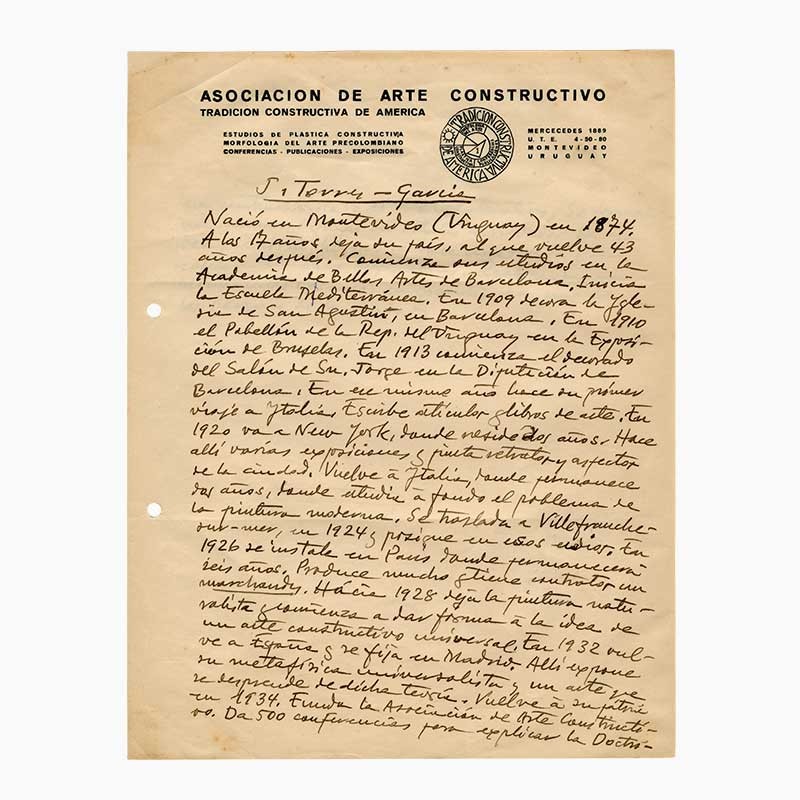
Joaquín Torres-García
Autobiographical note, n.d.

Joaquín Torres-García
Notes sobre art, s.l. [Gerona?]: s.n. [Rafel Masó?], 1913
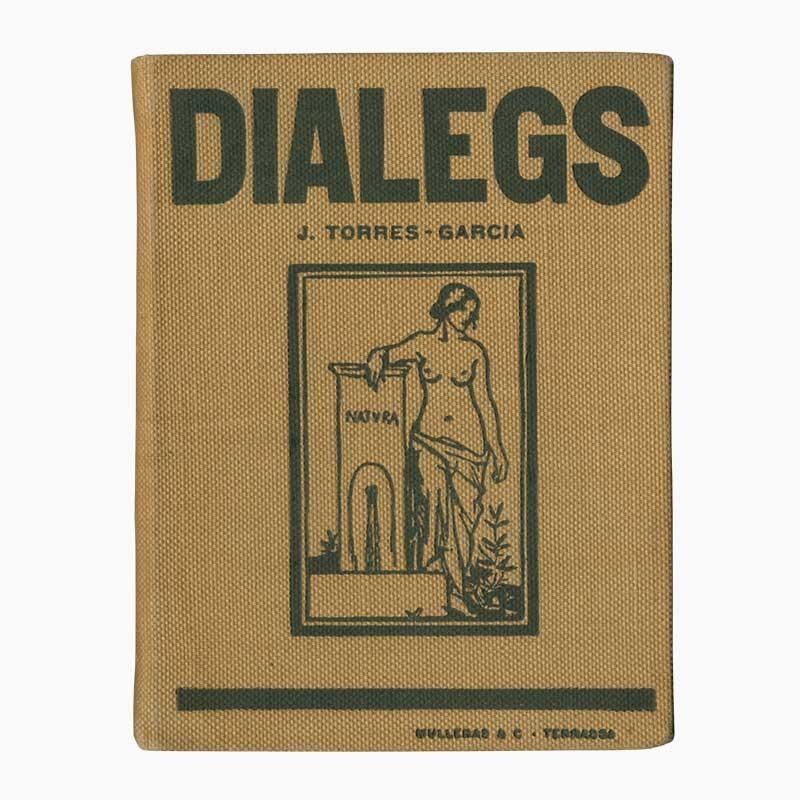
Joaquín Torres-García
Diàlegs, Tarrasa: Mulleras & C., 1915
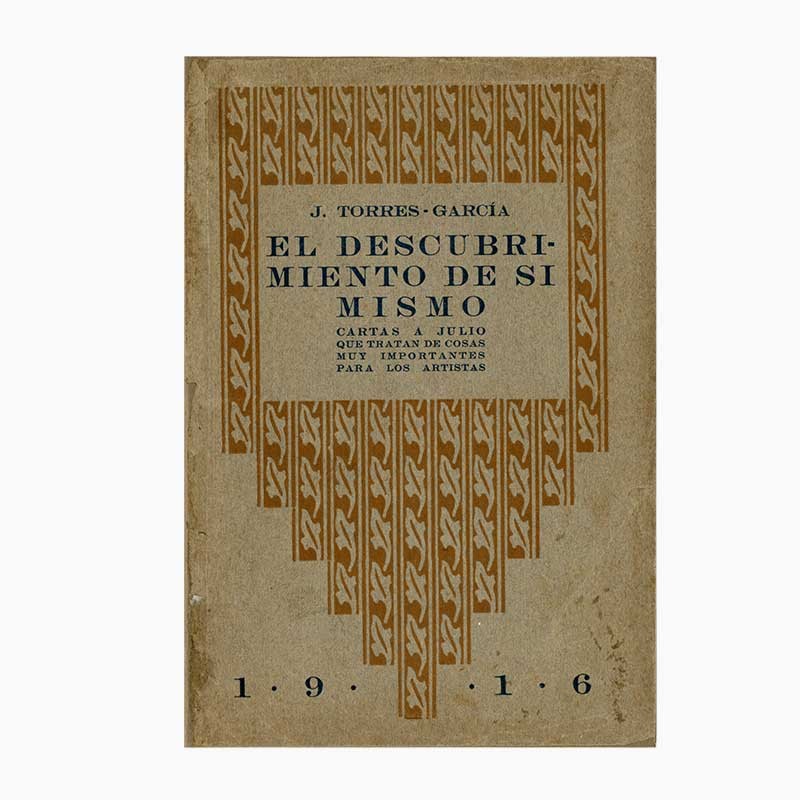
Joaquín Torres-García
El descubrimiento de sí mismo: cartas a Julio que tratan de cosas muy importantes para los artistas, Tarrasa: s.n., 1916
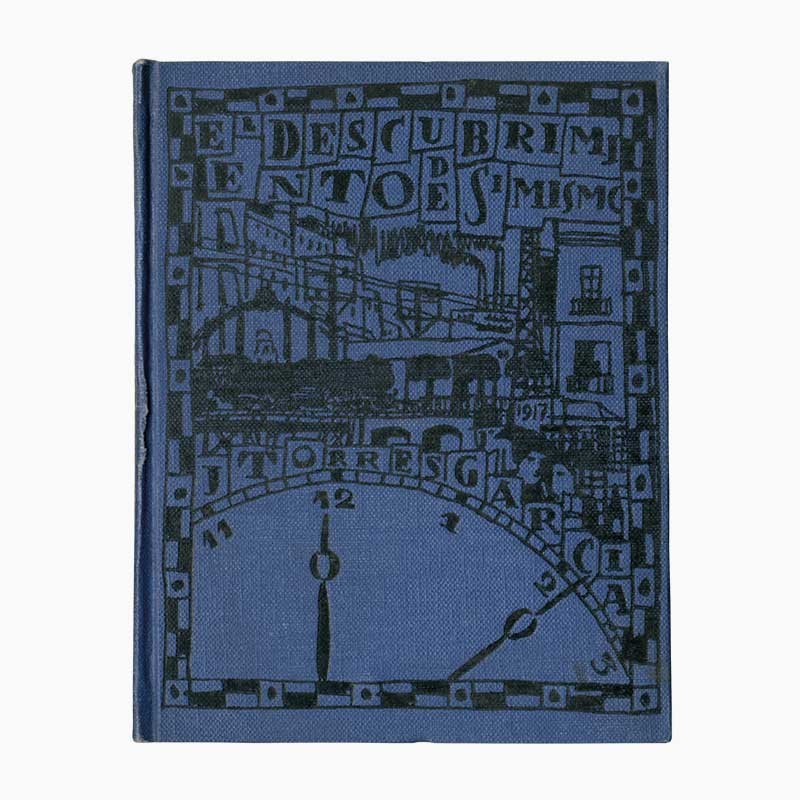
Joaquín Torres-García
El descubrimiento de sí mismo: cartas a Julio, que tratan de cosas muy importantes para los artistas, Gerona: Masó, 1917
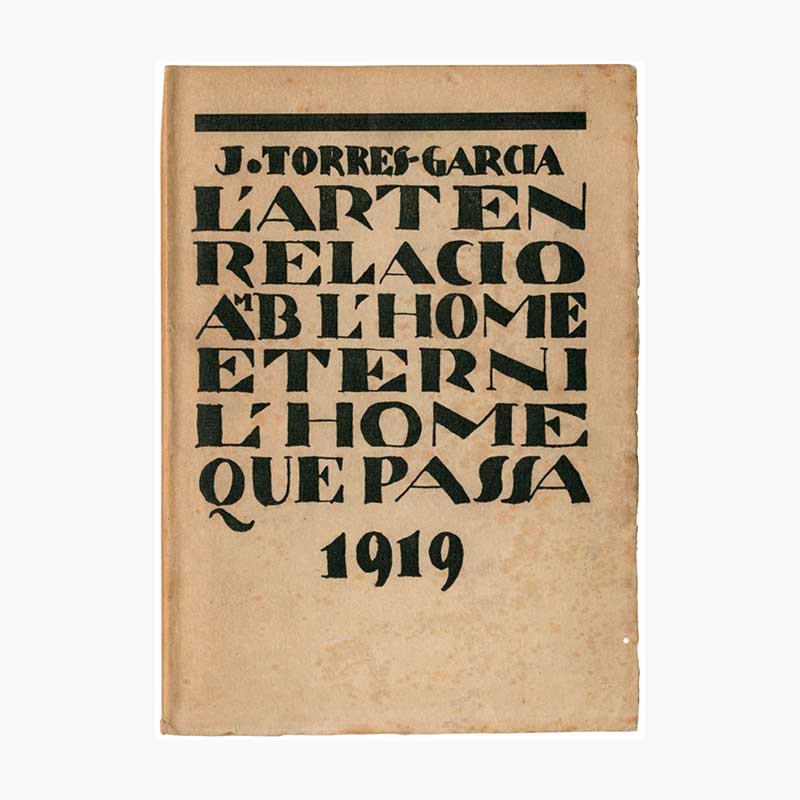
Joaquín Torres-García
L’art en relació amb l’home etern i l’home que passa, s.l. [Barcelona?]: Edició dels amics de Sitges, 1919
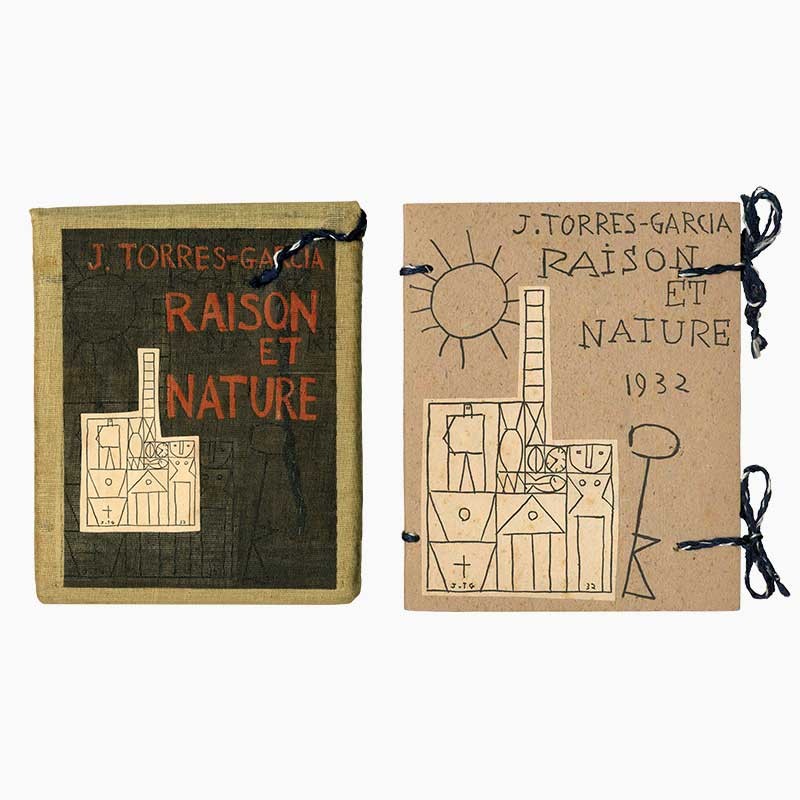
Joaquín Torres-García
Raison et nature: théorie, Paris: Imán, 1932
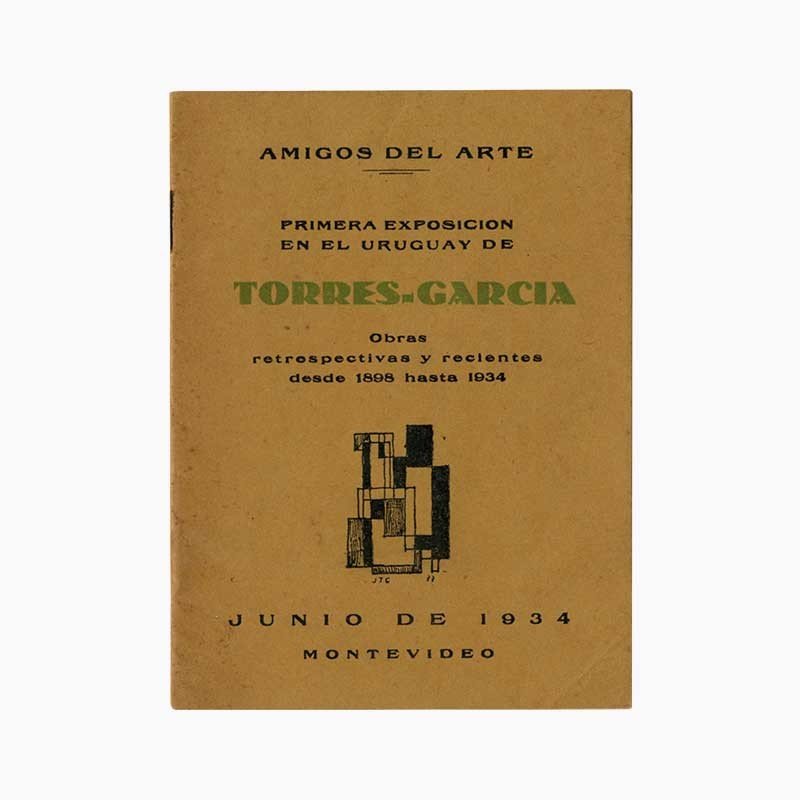
Primera exposición en el Uruguay de Torres-García: obras retrospectivas y recientes de 1898 hasta 1934, Montevideo: Amigos del Arte, June 1934
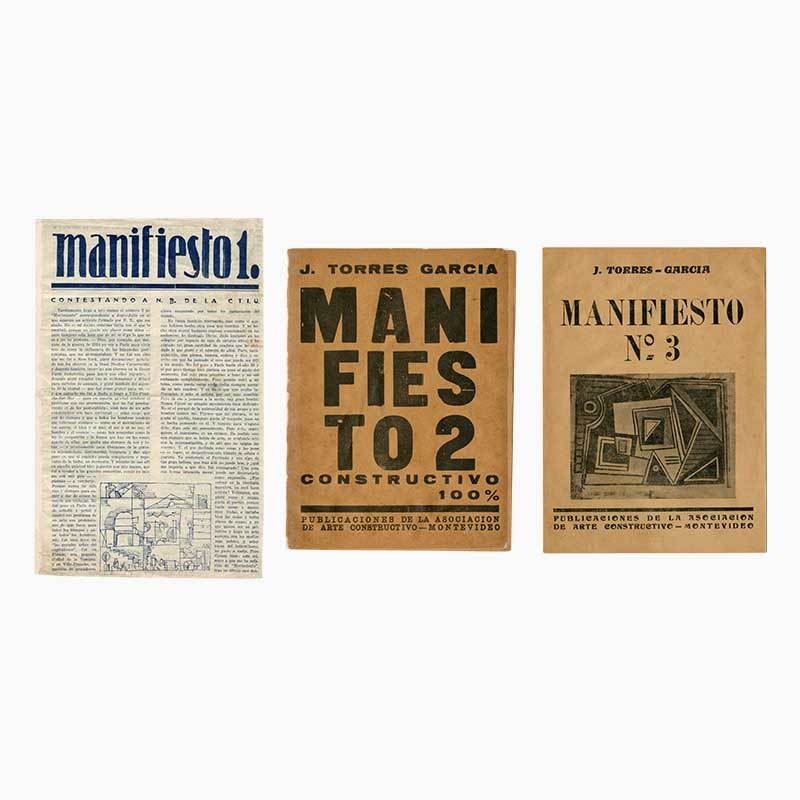
Joaquín Torres-García
Manifestos, 1934-1940

Cercle et carré, numbers 1 to 3, Vanves-Seine/Paris: s.n., March-June 1930

Círculo y cuadrado: revista de la Asociación de Arte Constructivo, numbers 1 to 10 [complete set], Montevideo: Asociación de Arte Constructivo, 1936-1943

Removedor, no. 1, Montevideo: Taller Torres-García, 1944-1952 [selection]
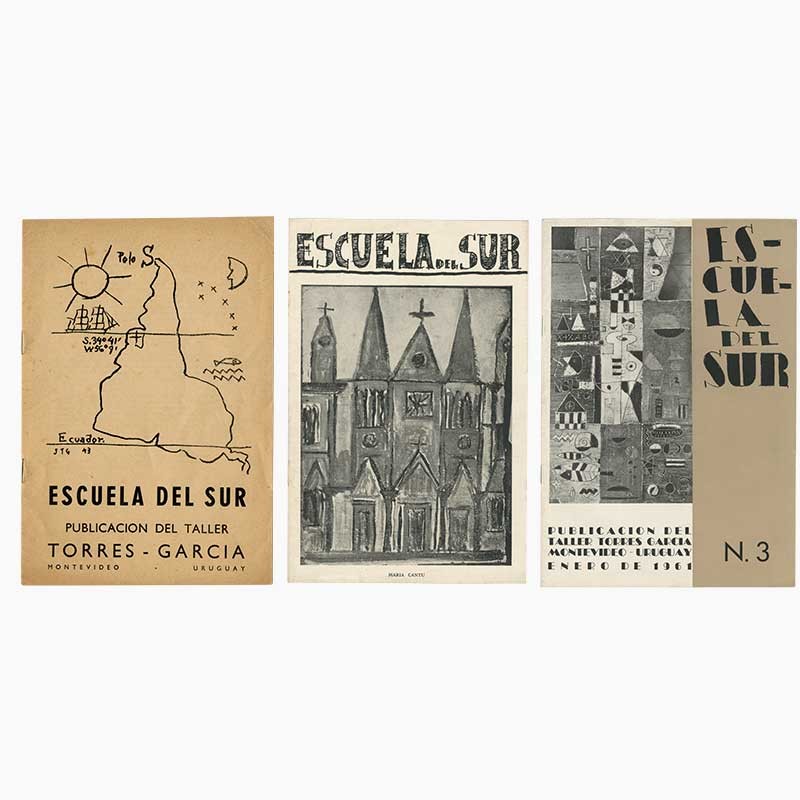
Escuela del Sur, numbers 1 to 3, Montevideo: Taller Torres-García, 1958-1961

Selection of catalogues, Barcelona, 1910-1933
165 publications and documents.
The creator of ‘constructive universalism’, Joaquín Torres-García (Montevideo, 1874–1949) was a painter, teacher, writer, sculptor and art theorist. In 1891 his family moved to Barcelona where he became involved in the Catalan noucentista movement. In 1921 he travelled to New York and upon his return to Europe in 1922 he moved to Villefranche-sur-Mer. In 1926 he moved to Paris where, in 1928, he met Theo van Doesburg, who presented him to the members of the group De Stijl and Piet Mondrian, marking the beginning of the group Cercle et Carré. In 1934 Torres-García returned to Montevideo and founded the Asociación de Arte Constructivo.
From 1928, thanks to his links with Mondrian and Van Doesburg, he began to introduce orthogonal structures into his paintings. Torres-García believed that art should serve reason and the harmony of the cosmic order, which he explored in his work through symbols and signs that he presented in built frameworks based around the golden ratio. He formed geometric shapes around the mystical idea of order, including numerous universal symbols. He promoted his theory of constructive universalism as an ‘absolute art’ in his emblematic compositions, as well as in his teaching work, writing and conferences.
In addition to the importance of his plastic work, which helped usher in constructivism in Spanish America—where it acquired particular relevance—is his work as an art theorist, which he began in 1913 coinciding with the publication of his first theoretical book: Notes sobre art, a title that is part of the Archivo Lafuente collection related to Torres-García, along with other books, magazines (Removedor, Escuela del Sur, Lo aparente y lo concreto en el arte, Guiones, Círculo y cuadrado, Cercle et Carré, Mito, etc.), posters, photographs, leaflets, catalogues, invitations, typewritten texts, manifestos and original drawings, such as Poemes en ondes hertzianas (1919), Formas (1928) and Untitled (1932).